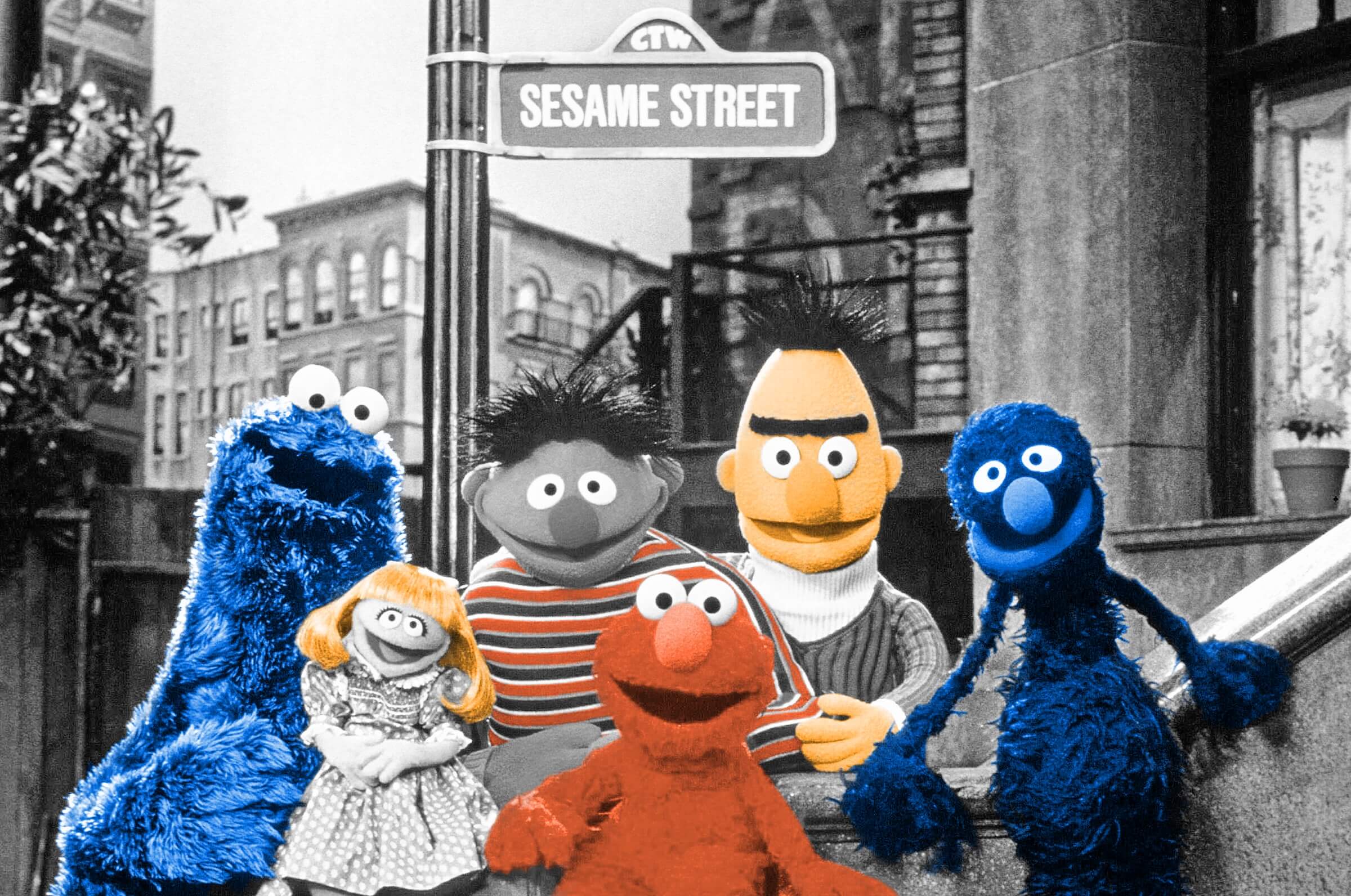

There’s only one place where sunny days have been sweeping the clouds away for more than 50 years: Sesame Street. What started as a way to educate preschool kids who might not have the means to receive schooling has turned into one of the most beloved American cultural institutions, filled with iconic characters such as Big Bird, Cookie Monster, Kermit the Frog, Grover, Elmo, Oscar the Grouch, Bert, and Ernie. Premiering on November 10, 1969, the show — which aired on PBS, and since 2016 on HBO and then HBO Max — continues to both entertain and educate new generations of children and remains a nostalgic favorite for adults of all ages.
The Show Idea Started at a Dinner Party

A producer at New York City’s Channel 13 public television station, Joan Ganz Cooney, was hosting a dinner party in 1966 when she chatted up Lloyd Morrisett, a Carnegie Corporation educator. He told her that one morning he found his 3-year-old staring at the television’s test pattern, waiting for something to begin. They started discussing whether there was any way for young minds to learn from the medium, and thus the entire concept of educational television — and Sesame Street — was born. It was first described as a preschool for those who couldn’t afford to attend.
The Original Name Was “123 Avenue B”

While names like The Video Classroom and Fun Street were tossed around, the most serious contender was 123 Avenue B, since it fit the vibe of the inner city set of the show. But the name was abandoned because it was an actual street address — and also because there was concern that those outside of New York City may not relate. The show’s writer Virginia Schone came up with the name Sesame Street, though it wasn’t immediately embraced, as many worried it would be hard for young kids to pronounce. After a weekend of brainstorming and no better options, it became the official title. “We went with it because it was the least bad title,” Cooney told Sesame Workshop.
“Rubber Duckie” Was a Billboard Hit Song
Of all the catchy and memorable songs on the show, the only one to ever become a certified Billboard hit was “Rubber Duckie,” which was on the Hot 100 for seven weeks in 1970, topping out at No. 16. The tune was performed by Jim Henson himself, in character as Ernie — and was also nominated for a Grammy for Best Recording for Children that year. Little Richard covered the song in 1994, and an all-star version for National Rubber Duckie Day, featuring Tori Kelly, James Corden, Sia, Jason Derulo, Daveed Diggs, and Anthony Mackie, was released in 2018.
Cookie Monster Can Only Sing Five Notes

Not only is “C” standing for cookie good enough for Cookie Monster, so is a five-note singing range. While he was never shy about showing off his vocals, Cookie Monster’s range has always been limited. (Thus, you rarely hear a Cookie-fronted ballad!) “If Grover and Cookie are singing a duet, the whole thing sounds like ‘arrggh,’” the show’s musical director, Bill Sherman, said in 2019, mimicking the sounds of the monster’s gargling. “Sometimes that really works.”
Snuffleupagus Remained Imaginary for 14 Years

Big Bird first mentioned his imaginary friend Snuffleupagus — or Snuffy for short — in a 1971 episode. But for more than a decade, he remained a mystery, seemingly just a figment of the bird’s imagination. However, in 1985, as child abuse cases started dominating the news, producers decided it was essential to teach children that when they talk to adults, they will be believed. So on the 17th season premiere of the show, the elephant-like brown Pachyderm showed up in person to help Big Bird water flowers with his trunk.
Kermit the Frog Was Originally Made Out of a Coat

The very first rendition of Kermit had more of a lizard-like feel and was made by Henson back in 1955 for the five-minute program Sam and Friends, which aired on a Washington, D.C., affiliate station. He was stitched together out of Henson’s mother’s old spring coat and pieces of Henson's own jeans — with the bug-eyes predictably made of ping pong balls. Later, he got a more saturated green hue and more frog-like features. Though not currently on display, the original Kermit is part of the National Museum of American History’s collection.
